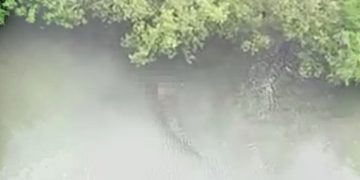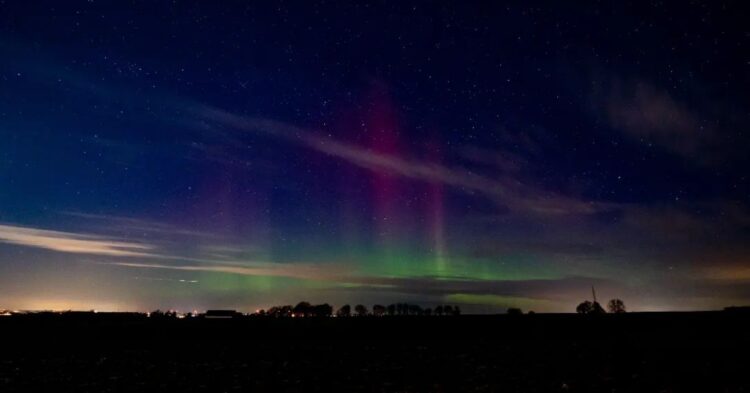The world gets easily fascinated by auroras or the Northern Lights in the dazzling sky, and who can blame them?
With Valentine’s Day being today, there is a great chance that northern lights may coincide with the day of love in areas of the US and the UK, thanks to a stream of solar wind on its way to Earth.
Reports of a geomagnetic storm

The National Oceanic and Atmospheric Administration (NOAA) Space Weather Prediction Center was expecting solar G1 (minor) geomagnetic storm conditions for Thursday evening.
This means that the Northern Lights may be seen in the skies by Friday.
The areas likely to witness the phenomenon

The Northern Lights will be visible in the UK and the US in areas including Idaho, Montana, North Dakota, Minnesota, Wisconsin, and Alaska according to NOAA‘s aurora view line map.
In addition, they can extend up to northern Michigan and Maine, and that will depend on the strength of the solar storm.
How northern lights form

According to NASA, when the sun releases a stream of charged particles known as the solar wind and they reach the earth, these winds interact with the earth’s magnetic field, accumulating energy there.
When this energy is released, it is released in the form that we know of as the Northern Lights.
Predicting the exact times will be a tough task

Predicting the exact timing and location of the Northern Lights viewing will not be easy as it is hard to tell when the energy release causing the phenomenon will exactly occur.
The sun is roughly 93 million miles away from the Earth, meaning it can take days for these energies to reach the Earth.
A platform might be able to solve the problem

A citizen science platform called Aurorasaurus is trying to implement a solution, notifying its users when the Northern Lights can be seen in their area and sending real-time alerts for where the Northern Lights can be currently seen.
The best times and tips to view an aurora

According to NOAA, the ideal time for viewing auroras is right before or after midnight.
Additional tips for better viewing include getting away from light pollution and the light of a full moon. Furthermore, smartphones and digital cameras are more sensitive to auroras, even if they cannot be seen by the naked eye.

















































